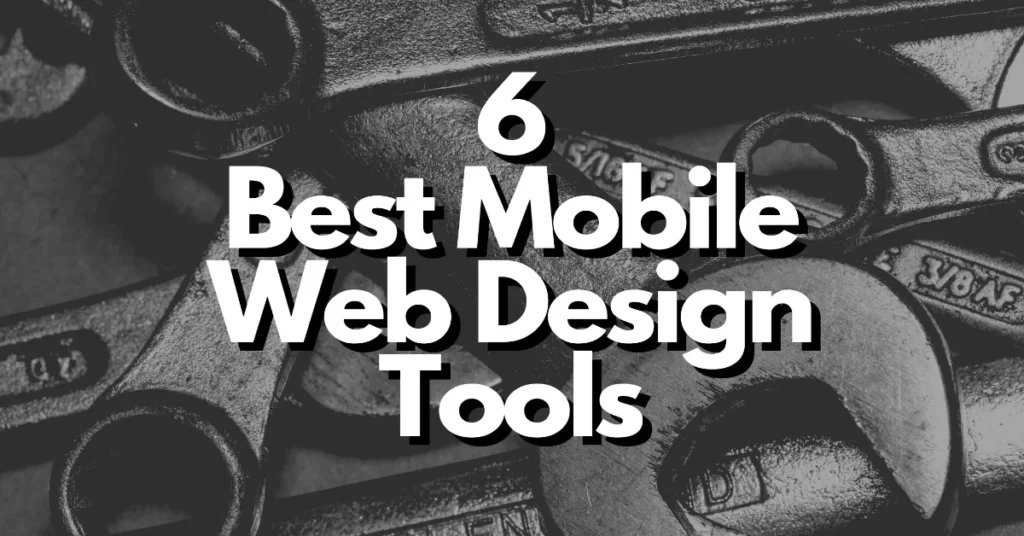Mobile web design is crucial in today’s digital landscape, as an increasing number of users access websites and applications through their mobile devices. In this blog post, we will introduce you to 6 best mobile web design tools that can help you create mobile-friendly and responsive websites, providing an optimal user experience for mobile users.
The 6 best mobile web design tools give a variety of options to suit any designer’s needs. Our list gets your site through the entire development process for less than $50.
6. Bootstrap
At the moment, the unquestioned industry leader for mobile web development is Bootstrap. Twitter’s own platform is an HTML, CSS and JavaScript framework for designing responsive mobile-minded websites.
The program has hundreds of components to customize your site, including badges, labels, dropdowns and progress bars. Hosted by GitHub is open source, meaning that you can make changes to the code to suit your web needs as you see fit.
Cost to Implement: Bootstrap is free to download in one of three forms depending the skill level of your development team.
5. Modernizr
Many mobile users don’t take into account their web browsers when setting up their smartphone plans. A website displaying on Safari may not look the same on Chrome, which can alter the user experience and lead to increased bounce rates. In short, your website might look terrible across different mobile browsers, and that can cost you sales.
Modernizr provides an elegant solution to that problem by detecting features on a mobile browser and creating JavaScript to accommodate. The software make sure your site displays the same way no matter how a mobile user tries to view it.
Money to Download: Modernizr costs zero dollars.
4. Google PageSpeed Insights

Image via Flickr from Alma Hallawi
Creating a great mobile experience is all about load speed. If the page takes forever to display all its images and features, the user is going to find another site. PageSpeed Insights from Google let’s you plug in your site’s URL and get instant feedback on load times, appearance on phone browsers and items you can fix to improve speed.
Correcting these errors can have a positive impact on your mobile search rankings in Google and other search engines. The higher you rank, the more clicks you tend to receive, which increases your chances to convert visitors into customers.
Nothing to Buy: Just head to the web page and drop in your site’s domain name. There’s no cost to use the tool.
3. Adaptive Images in HTML
One way you can improve load time on your mobile site is to improve how images appear. Adding the Adaptive Images tool makes your HTML images scale with the viewer’s screen size. Automatic caching and delivery quickens the load process and shortens lag time. Say goodbye to marking-up each image to create a responsive site, thanks to this little guy.
Developers designed the tool to work with any content management system. Upload the tool without fear of it breaking your site.
How Much it Costs: Notice a theme running here? Adaptive Images, thanks to a Creative Commons license, is free to download.
2. FitText
Are your pages headlines and display text falling off the screen on tablets or smartphones? Just like your images, there’s a tool to give your font sizes from wiggle room — FitText. This free jQuery plug-in slides seamlessly into your responsive design layout, compressing or expanding title font size to improve readability.
The tool doesn’t work for your site’s paragraph copy, but that’s not the real reason to use it. The goal here is making certain your eye-catching brand messages and selling points impact the user in the way you envision.
No jQuery? No Problem: Even if you don’t use jQuery, the developers created a couple FitText alternatives at no cost.
1. Ghostlab
Synchronized, cross-browser testing is the only way to see if your mobile design works the same on all available platforms. Ghostlab puts your website through the paces on phone, tablet and desktop. You get the complete user experience, including form fills, page scroll and reload speeds, to gauge what works and what needs correction.
The software’s inspection tool lets you and the development team view problem code and make changes in real-time. Any site running JavaScript can use GhostLab and there’s nothing extra to download.
There’s a Catch: Sorry, this one isn’t free. Running GhostLab costs $49, but with all the money you saved from the previous five tools, you can afford it.
A sleek, responsive mobile website is an absolute necessity for any online business looking to succeed. Grab these programs today and turn your sluggish site into competitive digital sprinter.
Conclusion
Mobile web design is a critical aspect of modern web development, and using the right tools can greatly streamline the process and ensure a smooth user experience.
In this blog post, we have explored 6 best mobile web design tools that can assist you in creating mobile-friendly and responsive websites. By leveraging these tools, you can design visually appealing and user-friendly websites that cater to the needs of mobile users.

